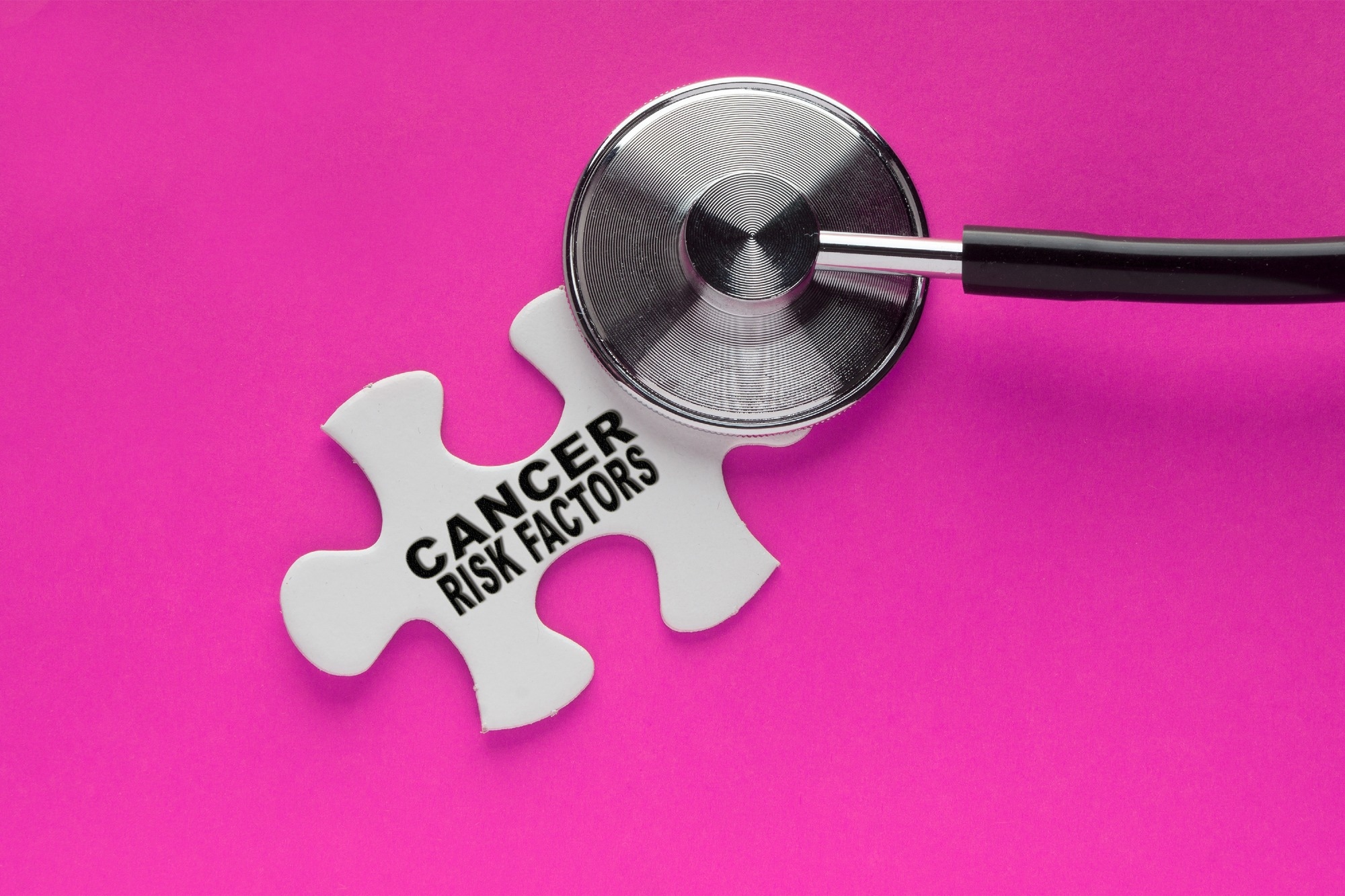In a recent review published in the Cell Journal, the researchers reviewed the existing data on tumor-promoting risk factors and their underlying mechanisms.
Study: Impact of risk factors on early cancer progression. Image Credit: Shaleen/Shutterstock.com
Background
Cancer can arise due to intrinsic or non-intrinsic risk factors (cellular extrinsic and exogenous risk factors), some of which may be modifiable.
Deoxyribonucleic acid (DNA) aberrations, essential for tumor formation, are acquired during the early stages, and the identification of biological molecules that can limit the excessive and uncontrolled growth of tumor cells could help reduce morbidity and cancer-related mortality.
Improving our understanding of carcinogenesis pathways could help identify high-risk individuals and reveal likely molecular targets for cancer prevention.
About the exam
In the present review, researchers have elucidated reversible, non-mutagenic pathways by which risk factors promote tumor growth that can be targeted to develop cancer prevention strategies.
Multi-level carcinogenesis and tumor promotion by risk factors
During homeostasis, cellular and structural microenvironmental components surround the tissue epithelium. A tumor is initiated by the gain of genetic alterations, usually oncogenic driver mutations, from exogenous or endogenous sources that damage DNA.
Subsequently, the initiated epithelial cells come under environmental selection pressure and compete with neighboring cells for resources and space to maintain in the tissues. They are also eliminated (by repair, extrusion or apoptosis).
Initiated cells are cleared from tissues by non-autonomous (non-competitive) cellular pathways, persist non-functionally, or proliferate after gaining a selection advantage.
Risk factors can alter the ability of tissues to allow the expansion of initiated cells (inflammatory processes and generation of progeny), affecting tissues before the acquisition of oncogenic alterations.
The “oncogenic switch,” or molecular pathways converting pre-invasive lesional tissue into invasive tumors, involves pre-invasive growths distorting tissue architecture and breaking tissue boundaries to form irreversible invasive tumors.
The change may involve chromosomal instabilities (CINs), resulting in copy number alterations (CNAs) and microenvironment remodeling.
Features of tumor promotion include increased cell lineage sensitivity, progeny generation, cooperating inflammation, immune evasion and 3D stress evasion, tissue takeover, and genetic alterations.
Air pollutants and smoke (including passive smoking) can cause cancers of the lung, bronchus and trachea via release of interleukin (IL)-1β from macrophages, inflammation, response disorders adaptive immunology and aberrant extracellular matrix (ECM) thickening.
Mesothelioma can result from excessive exposure to asbestos via the release of IL-1β via the pyrin domain of the NLR family containing 3 inflammasomes (NLRP3). Types of cancer associated with smoking include gastrointestinal tract, liver, lung, kidney, urinary system, and acute myeloid leukemia.
The underlying mechanisms include IkappaB Kinase (IKKb)/nuclear factor kappa B (NF-kB)-mediated cytokine production in lung myeloid cells, enhanced oncogenic mitogen-activated protein kinase (MAPK) signaling, and intestinal microbial dysbiosis.
Obesity and poor nutrition promote tumor formation through cyclooxygenase-2 (COX-2)-mediated KRAS activation and pancreatic inflammation, reducing oncogenic cell extrusion, impairing ECM, and lowering the competence of T cells, which improves the generation of offspring.
Excessive alcohol consumption may increase cancer risk by altering serological estrogen and insulin-like growth factor (IGF) levels, reducing cytotoxic T cell counts, and increasing macrophage counts.
Ultraviolet radiation can promote the formation of cutaneous melanomas by inducing proliferation of oncogenic melanocytes and altering adaptive immune responses.
Human papillomavirus (HPV) infection may increase the risk of cervical and maxillofacial cancers due to increased inflammation. Helicobacter pylori infections can promote gastric cancer through impaired differentiation at the β-cadherin/E-catenin level.
Epstein-Barr virus (EBV) infections promote lymphomas, nasopharyngeal tumors, and gastric tumors due to aberrant methylation, and hepatitis B and C infections potentiate liver cancers due to increased cellular inflammation and tissue fibrosis.
Approaches to prevent cancer
Mechanisms of tumor promotion could be targeted to prevent cancer. Cancer prevention strategies depend on the therapeutic indices of interventions and the benefit-risk ratio for application in high-risk individuals or on a population scale.
Smoking cessation could halt the assimilation of genomic alterations and reduce tissue inflammation and cell proliferation, allowing progressive tissue recolonization by cells with low mutational load.
Lifestyle changes, such as improving diet, especially for obese people, can reduce the risk of endometrial, colorectal, and breast cancer.
Tamoxifen (selective estrogen receptor modulator) hormone therapy reduces the risk of breast cancer by reducing the number of susceptible tumor-initiating cells and decreasing the rate of proliferation.
Anti-IL-1β therapies may help prevent lung cancer by reducing tumor-associated inflammation. Cancer vaccines (HPV vaccines for cervical cancer, hepatitis B vaccines for liver cancers) promote immunological monitoring of neoantigens linked to particular cancers or pharmacological modulators of the ability of healthy tissues to conduct elimination of mutant cells.
Mucin-1 and epidermal growth factor receptor (EGFR) vaccines prevent immune evasion by tumor cells. Antibiotics used to manage H.pylori infections can prevent gastric cancer. Nonsteroidal anti-inflammatory drugs (NSAIDs) such as aspirin may prevent esophageal and colon cancer in susceptible people.
Healthy tissue fitness modulators such as notch transcription factor 1 (NOTCH1) inhibitor and Notum inhibitors act at the level of the tissue takeover mechanism, while epigenetic targets such as Bromodomain-containing protein 4 (BRD4) targets susceptible cell lines. ECM modulators, including lysyl oxidase 2 (LOXL2) inhibitors, target 3D stresses of tumor escape.
Based on the results of the review, cancer risk factors may promote tumor formation via multiple non-mutagenic mechanisms that can be targeted to develop cancer prevention strategies.

